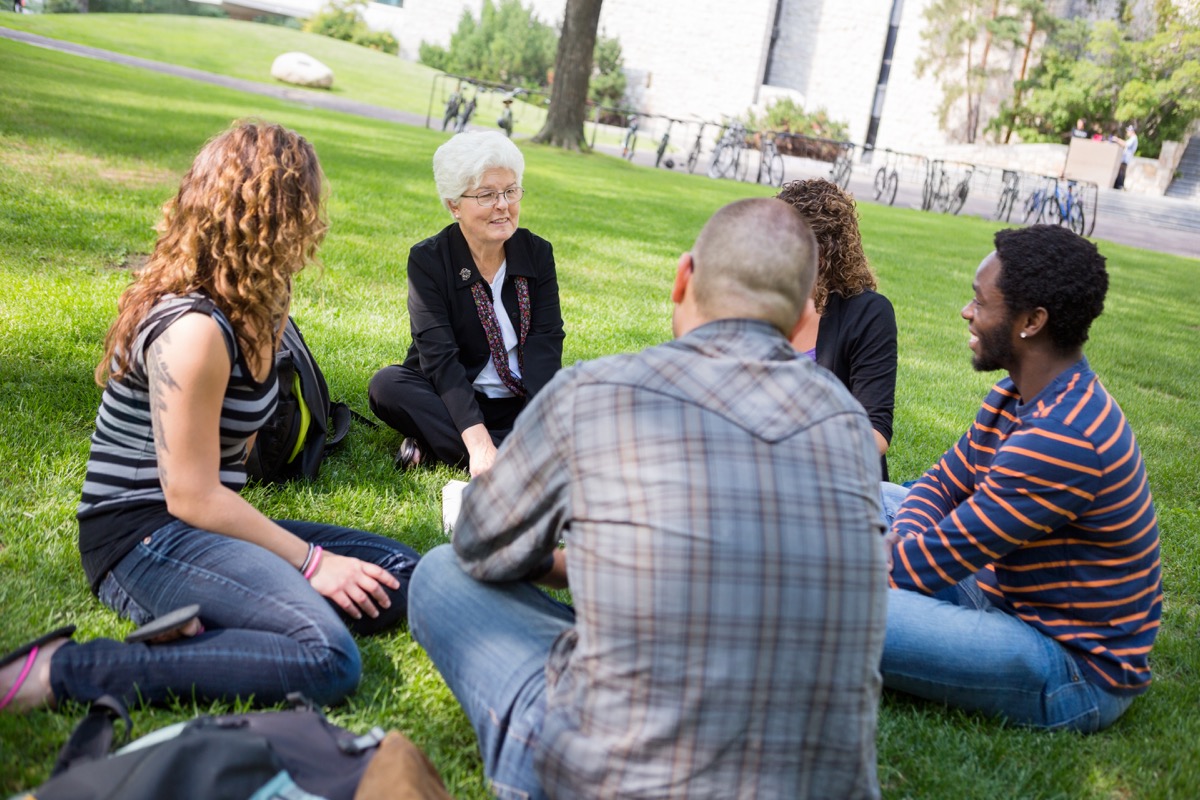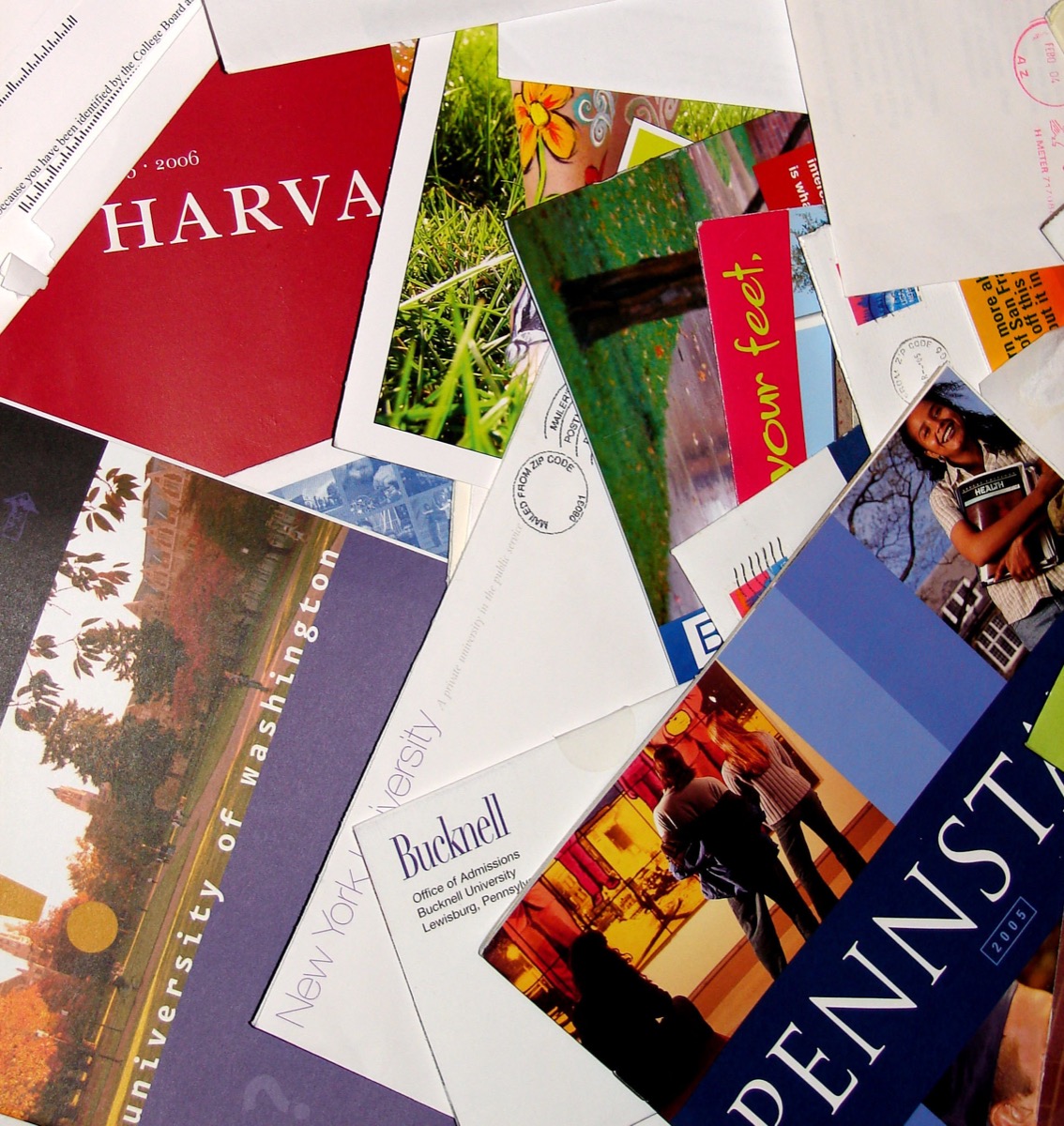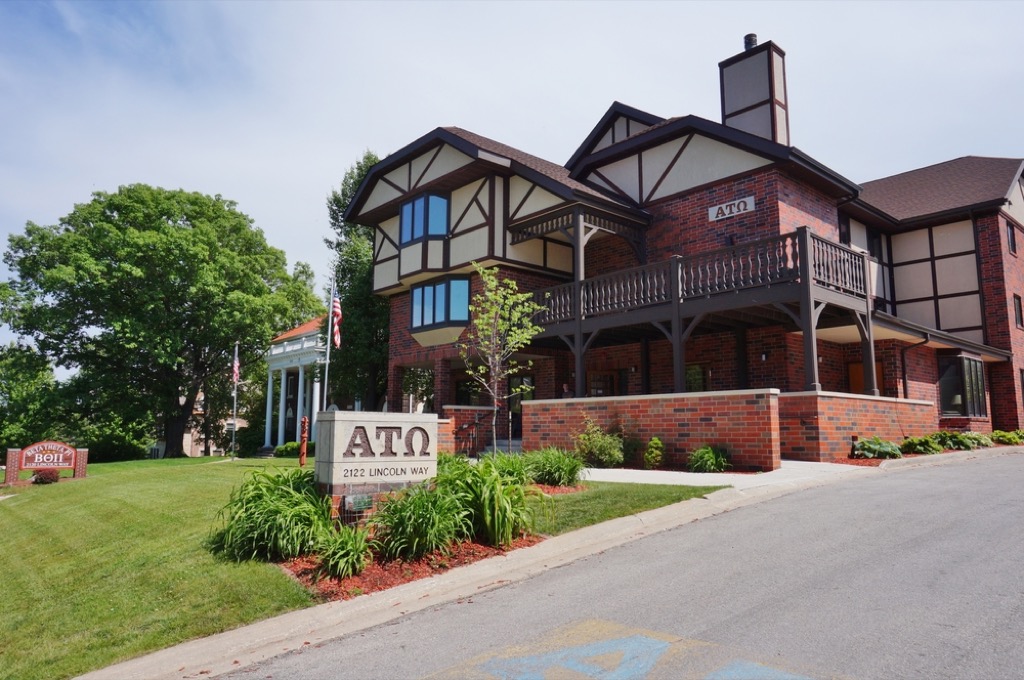15 Ways Going to College Is Way Different Now Vs. When You Went

The life of the typical undergraduate looks much different today than it did even 10 years ago. For instance, while students once had to either attend class or miss out on the material entirely, today’s co-eds have the luxury of watching recorded lectures online whenever they please. And while students used to call their randomly assigned roommates before move-in day to introduce themselves, incoming freshmen now communicate with their future roomies online and via text for weeks well before they even step foot on campus. If you got your B.A. decades ago, read up on the ways college is different now versus in the latter half of the 20th century.
1
Lectures are recorded and posted online.

Can’t make it to your 8 a.m. biology lecture? No problem. Nowadays, a surprising number of college classes are recorded and later put online for students to use as study material. And for those classes that aren’t made available in video format, students can always just refer to their online textbooks, notes, and other virtual course materials. The internet has truly made going to college easier than ever.
2
You can attend school online entirely.

Arizona State University. Drexel University. Washington State University. What do these schools have in common? All three of them offer entirely online programs, from bachelor’s degrees to master’s degrees. Yes, believe it or not, today’s students have the option to go to school online and, from the comfort of their couch, earn degrees. It’s amazing how far technology has come!
3
There are more women enrolled.

If you went to college in the ’60s, ’70s, or ’80s, then it’s more than likely that your campus and classes were testosterone-heavy. However, one of the major ways college is different these days is the gender ratio. According to data from the U.S. Bureau of Labor Statistics, the college enrollment rate for 2016 female high school graduates was 71.9 compared to just 67.4 percent for male high school graduates.
4
And more minorities.

Women aren’t the only ones taking the lead in college classrooms. In the same U.S. Bureau of Labor Statistics report, it was revealed that the college enrollment rates for 2016 Asian high school graduates, Hispanic high school graduates, and black high school graduates were 92.4 percent, 72 percent, and 58.2 percent respectively.
Seeing as only 56 percent of Asians, 22 percent of Hispanics, and 31 percent of black individuals between the ages of 18 to 24 were enrolled in college as recently as 2000, this is definitely a far cry from the lack of diversity people saw on college campuses in the 20th century.
5
There are dozens of new majors for students to choose from.

Computer game design. Data science. Digital forensics and cyber security. Nanotechnology. These are just some of the majors now offered by colleges from coast to coast that people who got their undergraduate degrees even 20 years ago weren’t given the chance to explore. Between advancements in technology and emerging social issues, colleges are constantly adding new majors to their catalogs in order to keep up with the job market.
6
College tuition is much more expensive.

If you attended university 30 or more years ago, then you’d be appalled by the cost of college today. According to CollegeBoard, the cost of tuition at a private four-year college during the 1988-1989 school year was $17,010; comparatively, in the 2018-2019 academic year, it was $35,830, which is more than double. And that doesn’t include room and board, textbooks, and all the other costly accompaniments of earning a college degree.
7
And so are textbooks.

Textbooks today cost more much than they used to. In fact, an infographic of data from the Bureau of Labor Statistics and the Census Bureau cited by HuffPost notes that from 1978 to 2014, the cost of educational books rose by a staggering 812 percent.
8
But student loans are making it easier for poorer students to attend.

As recently as the late ’90s, poorer families were much less capable of sending their children to college. In fact, one 2019 survey from the Pew Research Center notes that in 1996, just 12 percent of all undergraduates were in poverty.
However, things like scholarships and loans have made it easier for lower-income families to send their kids off to school. The same survey found that in 2016, 20 percent of all undergraduates were in poverty—and at private for-profit institutions, an average of 36 percent of the student body was low-income.
9
Dorm rooms are typically much nicer.

Ask your parents or grandparents about what their living situations were like when they were in school, and they’ll likely recall living in close quarters with as many as seven or eight other undergraduates. Fortunately, though, dorms have since gotten a serious upgrade. At some schools, the living quarters are so nice that students are even given apartment-like living arrangements with separate bedrooms, private bathrooms, and miniature kitchens.
10
Acceptance rates have dropped significantly.

Getting accepted into a school like Yale, Stanford, or Princeton is always impressive, but it’s even more impressive if you managed to do so recently. As an infographic from Spark Admissions shows, while the acceptance rates at all three of these prestigious institutions were either at or above 20 percent in 1980, in 2015 they were at 7.4 percent, 5.44 percent, and 8.4 percent, respectively.
11
College students are growing increasingly stressed.

College students today are put under quite a bit of pressure to perform well in school, take on internships, and maintain jobs. And understandably, all of these responsibilities are putting pressure on undergraduates more than ever before. One survey from The American Institute of Stress found that from 2003 to 2008 alone, the number of students who noted frequently experiencing stress in their daily lives increased by 20 percent.
12
Fewer students are joining sororities and fraternities.

Fraternity and sorority life is becoming increasingly less prominent on college campuses. In the fall 2017 version of the Higher Education Research Institute’s “The American Freshman” survey, 11.4 percent of all freshmen said that there was a “very good chance” they would join a fraternity or sorority; in fall 1996, 16.5 percent of the same demographic was interested in fraternity and sorority life.
13
And fewer students are religious.

According to the fall 1994 version of “The American Freshman” survey, a staggering 82.6 percent of college freshman noted attending religious services frequently or occasionally the year prior. However, in fall 2017, it was down to 69.2 percent.
14
Freshmen can now talk to their roommates online before meeting them for the first time.

Before there was Instagram, Twitter, and Facebook, college freshmen typically made one phone call to their assigned roommates and then just showed up at their dorms on move-in day and hoped everything worked out. Today, though, before the school year even starts, incoming students can connect via Facebook groups and the like and get to know their roommates—and even choose them based on mutual preferences!
15
People care much more about name recognition.

Unfortunately, nowadays people put a lot of weight behind a school’s reputation and ranking—so much so, in fact, that recently some parents and even celebrities were accused of cheating and bribing their way into universities like Yale, Harvard, Stanford, and the University of Southern California. For high-achieving students, the only colleges worth going to are those ranked in the top 25—though if you ask most hiring managers, they’ll tell you that it doesn’t matter where you go so long as you do a good job there. And when you enter the workforce, make sure you know these 15 Interview Tips Hiring Managers Wish You Knew.
To discover more amazing secrets about living your best life, click here to follow us on Instagram!